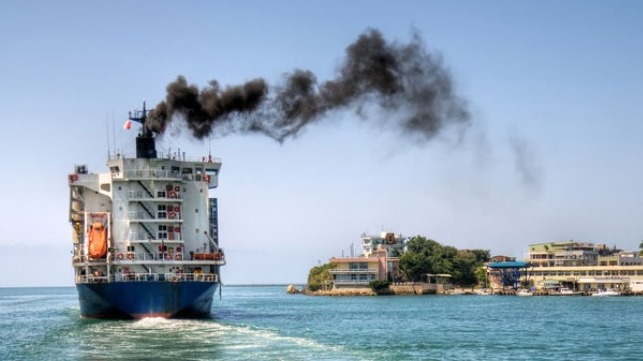Emissions Projected to Rise 50 Percent by 2050 in IMO Fourth GHG Study

The International Maritime Organization (IMO) released the long-awaited 575-page final report for its Fourth IMO Greenhouse Gas Study. Coming six years after the third report, the results are viewed as a critical scorecard measuring the success of the shipping industry towards the goals of reducing greenhouse gas emissions. The IMO is not commenting on the study at this stage, noting that its Marine Environment Protection Committee is being asked to consider and approve the study, but those in the industry as well as government and environmental groups are all anxiously reviewing the results and will begin providing their independent analysis.
The key finding of the report indicates that the shipping industry’s greenhouse gas emission increased by nearly 10 percent between 2012 and 2018. The international consortium of research institutes and universities that prepared the report also forecasts that shipping emissions will increase by up to 50 percent until 2050 relative to 2018 despite further efficiency gains, as transport demand is expected to continue to grow.
“The report will provide the IMO with a factual basis for the negotiations on measures to address greenhouse gas emissions from shipping,” says Jasper Faber who was project manager working at CE Delft that lead the consortium. “It has again improved on the methods and presentation of the previous Greenhouse Gas studies. We are proud to have assembled a truly global consortium bringing together some of the best experts in the field.”
In total, the report finds that GHG emissions including carbon dioxide (CO2), methane (CH4) and nitrous oxide (N2O), for the total shipping industry (international, domestic and fishing) increased 9.6 percent from 977 million tonnes in 2012 to 1,076 million tonnes in 2018. Looking specifically at the CO2 component of the emissions, they found a similar rate of increase from 962 million tonnes in 2012 to 1,056 million tonnes of CO2 emissions in 2018. As a result of this, they estimated that shipping’s share of global emissions increased slightly from 2.76 percent in 2012 to 2.89 percent in 2018.
The fourth report also introduces several new elements, more details and analysis. “This study represents a significant step forward in estimating emissions inventories, and for the first time uses a fully IPCC-aligned approach to estimate international shipping emissions,” said Elena Hauerhof, of UMAS who was the leader of the inventory work. “The study has also significantly advanced the accuracy of AIS based estimations for any ship, and evidences this by undertaking a detailed validation against fuel consumption and other key parameters reported in EU MRV for over 9000 ships”
Due to developments in data and inventory methods, this study is able to produce greenhouse gas inventories that distinguish domestic shipping from international emissions on a voyage basis as well as a new voyage-based allocation of international shipping. While the data shows an increase in CO2 emissions from international shipping on the voyage-based allocation it also reveals a lower growth rate than total shipping emissions and an approximately constant share of global CO2 emissions over this period. Using the vessel-based allocation of international shipping CO2 emissions increased more than eight percent but again slower than total shipping.
Another important area that the study looks at is the carbon intensity of shipping. It is reported to have improved by about 11 percent, but the growth in activity was larger than the efficiency gains according to the study. Shuang Zhang of Dalian Maritime University, leader of the work on carbon intensity commented, “Carbon intensity of international shipping is a new addition to the IMO GHG Studies, in response to the Initial IMO GHG strategy. The estimates provided by this report have clearly shown where we are on the way towards low-carbon shipping.” The analysis, however, notes that improvements in the carbon intensity of international shipping have not followed a linear pathway and more than half the improvements were achieved before 2012. The pace of carbon intensity reduction has slowed since 2015 the report says.
For the first time, the study also includes estimates for other elements such as back carbon which the report points to as having consequences both for climate and human health. Known as a super pollutant the data shows a 12 percent increase in black carbon emissions as well as more than a 150 percent jump in methane emissions. The report points out that total LNG use in international shipping increased by less than a third. The explanation for the difference in growth rates for fuel consumption and methane emissions is associated with a shift in the mix of machinery being used across the fleet during this period.
Looking forward the report provides a range of long-term economic and energy scenarios creating a projection that emissions will increase from about 90 percent of 2008 emissions in 2018 to 90-130 percent of 2008 emissions by 2050. The authors expect that emissions in 2020 and 2021 will be significantly lower based on the impact of COVID-19, but note depending on the recovery trajectory, overall the impact of COVID-19 is likely to be smaller than the uncertainty range of the presented scenarios.
The IMO expects to submit the report to the committee in the fall for its consideration and approval. In the meantime, the complete document is available for download by registering on the IMO’s website.
